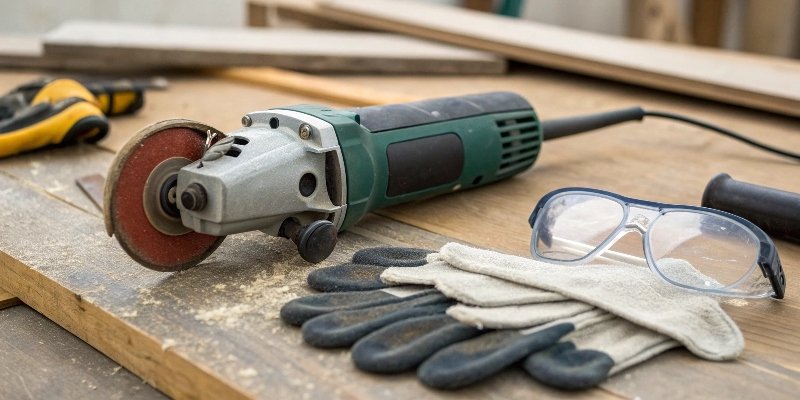
Worried about the horror stories you’ve heard about angle grinders? These powerful tools can seem intimidating, and misuse can certainly lead to serious accidents. But are they inherently dangerous?
Yes, angle grinders can be very dangerous if operated incorrectly. The primary risks include violent kickback, wheel shattering that sends shrapnel flying, and deep cuts. However, by strictly following safety protocols, using proper PPE, and maintaining the tool, you can significantly minimize these dangers and use it safely.

I’ve been in the abrasives industry for nearly three decades here in Henan, the heart of China’s abrasives production. I’ve seen firsthand how these tools can transform a difficult job into a simple one. I’ve also seen the consequences of cutting corners on safety. The truth is, the tool isn’t the problem; it’s how you use it. Understanding the risks is the first step toward using this valuable tool with the respect and caution it deserves. Let’s break down the real dangers and how you can protect yourself and your team.
How common are angle grinder accidents?
You’ve probably heard unsettling stories about grinder accidents and wonder if they’re exaggerated. The thought of becoming a statistic can make anyone hesitant to pick up the tool.
Angle grinder accidents are unfortunately common, but almost always due to improper use. The good news is that with correct operation and safety gear, the accident rate can drop to less than 0.7 per 10,000 uses. A huge number of severe injuries are directly linked to not wearing safety equipment.

In my factory, we live by data and experience. The numbers tell a clear story: carelessness is the real enemy. We found that a staggering 82% of serious, preventable injuries involved operators not wearing safety goggles. It’s a simple step that makes a world of difference. The environment also plays a role. Here in China, some regions are very humid, which can increase the risk of the grinding wheel slipping1 or electrical faults. This is why a pre-operation check2 is non-negotiable for us. An accident is a chain of small mistakes. By breaking that chain with consistent safety habits, you change the odds dramatically in your favor.
Understanding the Statistics
The risk of using an angle grinder isn’t just a simple number; it changes based on behavior. Let’s look at how your actions directly impact your safety.
| Safety Measure | Approximate Accident Rate (per 10,000 uses) | Common Outcome |
|---|---|---|
| No PPE, Improper Use | High (5+) | Severe eye injury, deep cuts, fractures |
| Some PPE, Inconsistent Use | Moderate (1-3) | Minor cuts, burns, near-misses |
| Full PPE, Proper Use | Very Low (<0.7) | Safe and efficient operation |
This data shows that you are in control. Treating the tool with respect and following a simple checklist every single time is the most effective way to prevent accidents. It’s not about luck; it’s about discipline.
Can an angle grinder cut through bones?
The raw power of an angle grinder is what makes it so useful, but it’s also frightening. It slices through metal with ease, which makes you wonder what it could do to a person.
Yes, an angle grinder can cut through bone with terrifying ease. The disc spins at thousands of RPM, and it will not stop if it makes contact with flesh and bone. This is why it is one of the most dangerous power tools if it gets out of control.

Let’s not downplay the reality here. A spinning abrasive wheel is designed to remove hard material quickly. Your body is not as hard as steel. The most significant risks are kickback3 and wheel shatter. Kickback happens when the wheel jams in the material. The tool then kicks back toward the operator with incredible force, sometimes over 150 Newtons. That’s enough to fracture a wrist or send the spinning grinder flying. Even worse is when a wheel shatters. We’ve seen test data showing fragments flying at over 80 meters per second—that’s similar to the speed of a bullet. These fragments can penetrate standard clothing and cause devastating injuries. I always tell new workers to imagine the wheel is a live, unpredictable animal. You must hold it firmly with both hands and always know where it might jump if it gets spooked.
The Physics of Danger
Understanding why it’s dangerous helps you stay safe. Two main events cause the most catastrophic injuries:
- Kickback: This occurs when the wheel is pinched or snagged. The rotational energy of the motor is transferred instantly to the body of the tool, causing it to lurch violently, usually back toward the user. This is especially dangerous during plunge cuts or when using the wrong part of the wheel.
- Wheel Shatter: This can happen for a few reasons: the wheel has a hidden crack, it’s rated for a lower RPM than the grinder, or it’s dropped. When it fails at over 10,000 RPM, it doesn’t just break—it explodes.
Always use the safety guard, as it’s designed to contain fragments and deflect the tool during a kickback event.
Is a 9 inch grinder dangerous?
You have a big job and need the extra power of a 9-inch grinder, but its size and noise are intimidating. Is it really more dangerous than its smaller cousins?
Yes, a 9-inch grinder is significantly more dangerous than smaller 4.5 or 5-inch models. Its increased power, weight, and disc diameter create much more violent kickback forces that are extremely difficult to control. It is a tool strictly for experienced and strong operators.

The difference between a small grinder and a large one is like the difference between a family car and a race car. Both can get you from A to B, but one requires far more skill, strength, and concentration to handle safely. A 9-inch grinder4 has immense torque. When it kicks back, it doesn’t just jump; it tries to wrestle itself out of your hands. Single-handed use is out of the question. You need a firm, two-handed grip and a stable, balanced stance at all times. The large disc also means more surface area is in contact with the material, increasing the chance of it binding or jamming. We supply many heavy industrial clients, and we always advise them to reserve the 9-inch grinders for heavy-duty, straight-line cutting and grinding on open surfaces. For anything else, a smaller grinder is often safer and more efficient.
Choosing the Right Size for the Job
Bigger is not always better. Using a tool that is too powerful for the task increases risk without adding benefit.
| Feature | 4.5-inch / 5-inch Grinder | 9-inch Grinder |
|---|---|---|
| Power & Torque | Moderate | Very High |
| Kickback Force | More Manageable | Severe and Violent |
| Control | Easier, better for precision | Requires significant strength |
| Weight & Fatigue | Lighter, less tiring | Heavy, quickly causes fatigue |
| Best Use Case | Small cuts, grinding, tight spaces | Heavy stock removal, large cuts |
Always match the grinder to the job and, just as importantly, to the operator’s physical ability and experience level.
What is the most common injury when using a grinder?
To stay safe, you need to know what you’re protecting yourself from. Are you focused on the right risks, or is the most common danger something you’ve overlooked?
By far, the most common injuries are cuts from accidental contact and eye injuries from flying debris. A piece of metal or a fragment of the wheel can hit your eye. Shockingly, data suggests over 60% of operator eye injuries happen when not wearing safety glasses.

In our production facility, the rule is simple: no one enters the grinding workshop without safety glasses. Not for a minute, not for a quick check. I’ve seen too many "it was just for a second" accidents. Debris from grinding doesn’t just fly off; it’s ejected at high speed. Your reflexes are not fast enough to blink in time. After eye injuries, the next most common are deep cuts and lacerations, often to the hands, arms, and legs. These usually happen during a kickback event or when an operator loses their grip on the tool. Another often overlooked danger is burns. When cutting metal, the workpiece can instantly heat up to over 600°C. Accidentally touching it can cause a severe burn. This is why proper gloves are part of the required gear.
A Complete Safety Checklist
Protecting yourself involves a simple, repeatable process.
-
Personal Protective Equipment (PPE): This is your armor.
- Must-Haves: Safety goggles (not just glasses), dust mask.
- Highly Recommended: Anti-cut gloves, non-slip work boots, ear protection.
- What to Avoid: Loose clothing, jewelry. Tie back long hair.
-
Machine Inspection: Check the tool before the power is on.
- Is the wheel free of cracks?
- Is the guard in place and secure?
- Is the wheel’s max RPM rating higher than the grinder’s RPM?
-
Safe Operation: How you use it matters most.
- Run the grinder for one minute before cutting to spot any wobble.
- Always use two hands.
- Stand to the side of the cutting path, not directly behind it.
- Use a 15-30 degree angle for grinding; don’t press down flat.
- Let the tool cool down after 30 minutes of continuous use.
Conclusion
Angle grinders are powerful and demand respect. With the right training, proper safety gear, and a quality tool, they are safe and essential for countless jobs. Your safety is in your hands.
-
Understand how environmental factors like humidity can impact the safety of angle grinder operations. ↩
-
Discover the importance of conducting pre-operation checks to ensure safe tool usage. ↩
-
Understand the causes of kickback and how to prevent it for safer grinding operations. ↩
-
Find out why larger angle grinders pose greater risks and when to use them. ↩
Written by
leeon
You may also be interested in:
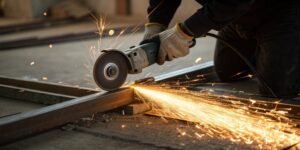
Can an angle grinder start a fire?
You use powerful tools like angle grinders every day, but the shower of sparks can be worrying. A single stray spark could ignite nearby materials,
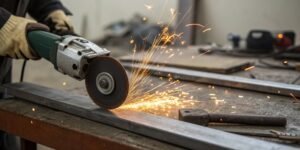
Can You Use an Angle Grinder Without a Shield?
Feeling the urge to remove your angle grinder’s guard for a tricky cut? That simple act could lead to a life-changing accident. Your safety is
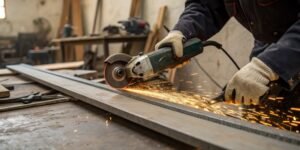
Can a saw be sharpened with an angle grinder?
A dull saw slows down your work and costs you money in replacements. But what if you could restore a sharp edge using a tool
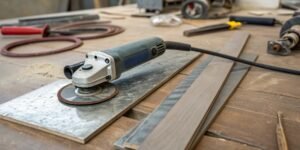
What are the real purposes of an angle grinder?
Your angle grinder sits in your workshop, but do you know its full power? You might be using it for just one job. This limits
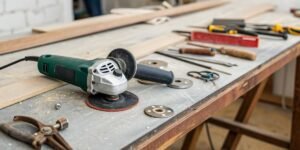
Should I buy an angle grinder for home related works?
Thinking about a tough home project? Cutting metal or tile by hand is slow and frustrating. An angle grinder could be your powerful solution for
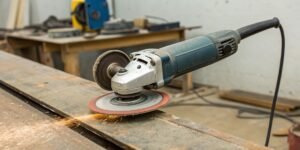
What is an angle grinder?
Are you confused by this powerful, versatile tool? You see it everywhere but are not sure what it does or if you need one. Getting
